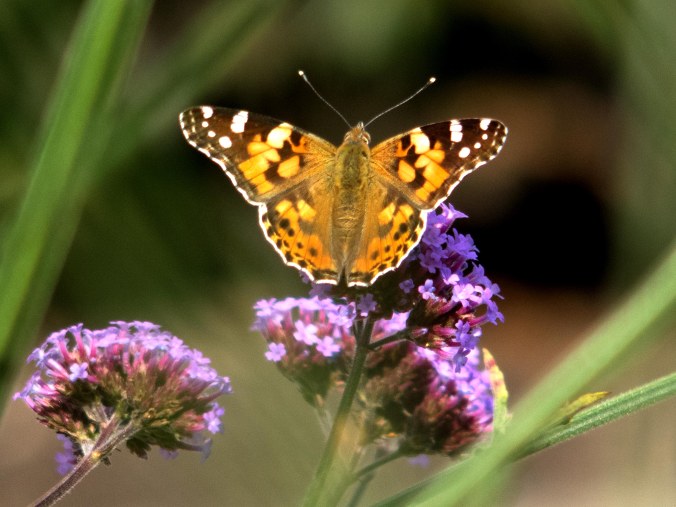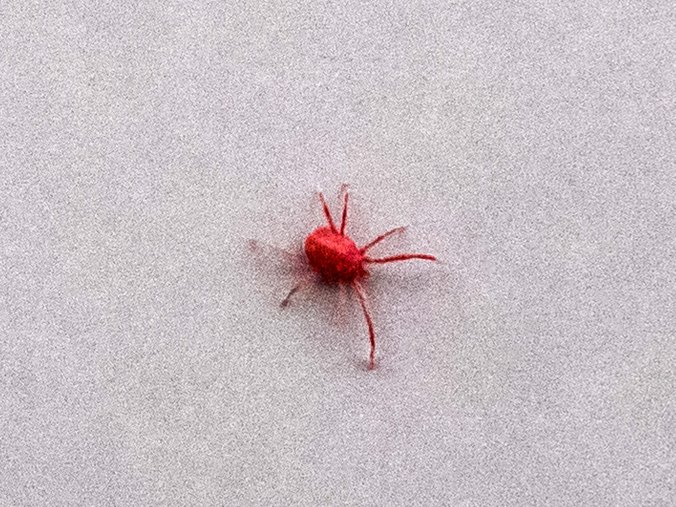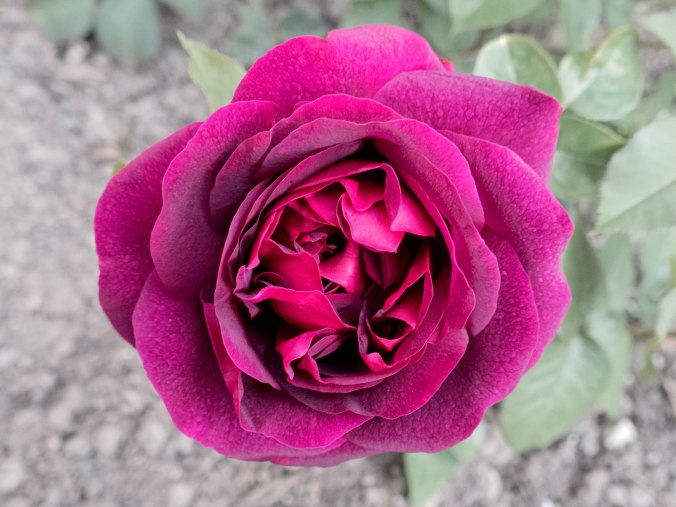Until two weeks ago, if asked what a “Painted Lady” was, I would probably have answered by describing the Mona Lisa or some other similar painting of a woman. That was until I read an article by my friend Bob Gilbert all about the Painted Lady butterfly. It is not a particularly uncommon butterfly, with sightings every year. However, every ten years or so, there is a mass influx of these butterflies arriving in Britain. And 2019 is one of those years. It is an amazing butterfly in that it migrates from North Africa and the Middle East to Britain and northern Europe, and has been sighted as far north as the Arctic Circle. Some of these butterflies then manage to migrate back down to Africa, covering over 7,500 miles in their annual migration. It is believed that they use the sun to navigate. Nature is truly amazing!
Well, two days ago I noticed a flutter of butterflies congregating on a bed of Verbena bonariensis at the front of the hospice. I counted at least 25 of these beautiful creatures. They have distinctive orange, brown and black-tipped wings with white black and white spots. Sometimes the colours look a bit faded, but on this day they didn’t. They were feeding on the mass of purple flowers. Everytime a car went past, or someone got too close, they would all flutter off, flying around for a couple of seconds before descending again. It was quite a sight, and one noticed by a lot of the visitors. I managed to get some photos…



The Painted Lady isn’t the only butterfly spotted at the hospice. Last week a group from the Oaks Day Centre did a short butterfy survey in the gardens. They spotted seven species in total, including a ‘Green Veined White’. And the previous week, a photographer from Wigan Council spotted a ‘White Letter Hairstreak’, which is apparently a rare butterfly that feeds off elm trees.
It is very exciting that the gardens are attracting a wide variety of wildlife. They are hopefully being encouraged by the supply of food, be it wildflowers, cultivated flowers or the provision of bird seed. I recently worked out that this year we will have supplied over 300kg of bird seed to the local birds. We have lots of species coming to the feeding stations, including recently bullfinches. What a beautiful bird. Sadly no photo taken by me, but here’s one I found freely available!

Photo by Pixabay on Pexels.com
Another creature that I have seen recently is the money spider, or to give it it’s proper name the red spider mite. It is tiny (less than 1mm) and I suspect that no-one else at the hospice has spotted them. But I did when the sun was out and they were scuttling around on the flags. It is widely considered to be a pest because they like to suck the sap from the leaves of plants. But I like them because they remind me of my first primary school where they could be seen the school’s limestone walls. Here’s a very grainy photo!

The roses that I planted just before last Christmas, and which were inspired by my Dad, have been beautiful in recent weeks. I picked ones which had a strong fragrance and they haven’t disappointed. Unfortunately I can’t send the smell through the internet, but I can send a picture. This one is called ‘Munstead Wood’.

I will try to get some more photos of them for the next blog. I have recently been working in one of our courtyard gardens that has become very overgrown. It is not quite finished yet, but when it is I will blog about it.
Until then, much love, Jim and all the Painted Ladies! X